
JOURNAL OF SYNCHROTRON RADIATION
Scope & Guideline
Transforming Knowledge in Radiation Applications
Introduction
Aims and Scopes
- Advanced X-ray Techniques:
The journal highlights advancements in X-ray techniques such as phase-contrast imaging, ptychography, and various spectroscopies, showcasing how these methods provide deeper insights into material structures and dynamics. - Applications in Material Science and Biology:
Significant emphasis is placed on the application of synchrotron radiation in material science and biology, including studies on catalysis, nanotechnology, and biological structures, demonstrating the versatility of synchrotron techniques. - Instrumentation and Beamline Development:
Research on the development and optimization of synchrotron beamlines and detectors is a core focus, providing insights into new technologies that enhance data quality and experimental capabilities. - Computational Methods and Data Analysis:
The journal publishes studies that integrate computational techniques, including machine learning and advanced data analysis methods, to improve the interpretation of synchrotron data and enhance experimental outcomes. - In Situ and Operando Studies:
A growing area of research involves in situ and operando studies that leverage synchrotron radiation to observe dynamic processes in real-time, significantly contributing to understanding material behavior under various conditions.
Trending and Emerging
- Machine Learning Applications:
An increasing number of publications are exploring the application of machine learning techniques in the analysis and interpretation of synchrotron data, enhancing the efficiency and accuracy of data processing. - High-Throughput and Automation Techniques:
There is a growing focus on automation and high-throughput techniques in synchrotron experiments, allowing for more extensive data collection and analysis within shorter timeframes. - Multimodal Imaging Approaches:
Research is trending towards multimodal imaging techniques that combine various synchrotron methods, facilitating more comprehensive investigations of complex materials and biological systems. - Environmental and In Situ Studies:
The journal is increasingly publishing studies that focus on environmental applications and in situ investigations, reflecting a growing interest in understanding materials under realistic operating conditions. - Innovative Sample Environments:
Emerging themes include the development of novel sample environments that allow for the study of materials under extreme conditions, such as high pressure and temperature, further expanding the capabilities of synchrotron radiation.
Declining or Waning
- Traditional X-ray Diffraction Techniques:
There has been a noticeable decline in the publication of studies solely focusing on traditional X-ray diffraction techniques, as research increasingly emphasizes advanced methodologies that offer higher resolution and new capabilities. - Basic X-ray Spectroscopy:
The journal has seen fewer contributions centered around basic X-ray spectroscopy techniques, indicating a shift towards more complex and integrated approaches that utilize synchrotron radiation. - Static Sample Characterization:
Research focused on static sample characterization has become less common, with a growing preference for dynamic studies that provide insights into time-dependent processes and material behaviors.
Similar Journals

INDIAN JOURNAL OF PURE & APPLIED PHYSICS
Exploring the depths of pure and applied physics.INDIAN JOURNAL OF PURE & APPLIED PHYSICS is a distinguished publication dedicated to advancing the realms of physics and its applications. Published by the NATIONAL INSTITUTE OF SCIENCE COMMUNICATION-NISCAIR in India, this journal has been a key player in disseminating valuable research since its establishment. With an Open Access format adopted since 1999, it ensures a broader reach and accessibility for researchers, professionals, and students alike. The journal covers a wide array of topics within the multidisciplinary field of physics, currently holding a 2023 Scopus Ranking that reflects its growing influence, with a category quartile of Q3 in Multidisciplinary studies and Q4 in Physics and Astronomy (miscellaneous). This makes it an essential resource for those aiming to keep up with the latest trends and researches in physics. The journal operates from the Pusa Campus, New Delhi, and continues to contribute significantly to the scholarly community with its rich history of articles converged since 1969.
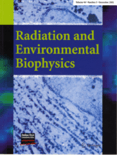
RADIATION AND ENVIRONMENTAL BIOPHYSICS
Bridging Science and Safety in Radiation StudiesRADIATION AND ENVIRONMENTAL BIOPHYSICS, published by SPRINGER, is a premier journal dedicated to advancing the understanding of the interactions between radiation and biological systems within environmental contexts. With an ISSN of 0301-634X and an E-ISSN of 1432-2099, this journal has established itself as a vital source of innovative research across multiple disciplines, including Biophysics, Environmental Science, and Radiation Studies, maintaining a significant presence since its inception in 1974. The journal is categorized within the Q3 in Biophysics and Q2 in both Environmental Science and Radiation for 2023, indicating its relevance and influence in these domains. Researchers and professionals will find the journal's rich content invaluable, offering insights that could impact public health, environmental policy, and radiation safety. Although it is not an open-access journal, RADIATION AND ENVIRONMENTAL BIOPHYSICS provides critical information through its rigorous peer-reviewed articles, making it an essential resource for academics and practitioners aiming to contribute to this evolving field.
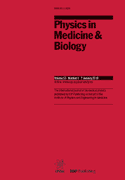
PHYSICS IN MEDICINE AND BIOLOGY
Pioneering Research for Tomorrow's Medical TechnologiesPHYSICS IN MEDICINE AND BIOLOGY is a prestigious journal published by IOP Publishing Ltd, with a storied history dating back to 1956 and extending through 2024. This internationally recognized journal caters to the interdisciplinary fields of medical physics and bioengineering, making significant contributions to the research and development of advanced diagnostic and therapeutic technologies. It holds an impressive Q1 ranking in both Radiological and Ultrasound Technology and Radiology, Nuclear Medicine and Imaging categories, reflecting its critical role in disseminating high-quality research. With a significant focus on merging the principles of physics with advancements in medicine, PHYSICS IN MEDICINE AND BIOLOGY serves as an essential resource for researchers, professionals, and students alike, fostering innovation and enhancing collaboration in the healthcare sector. Although the journal is not currently open access, it maintains robust participation in the Scopus database, ranking #62 out of 333 in Radiology, Nuclear Medicine and Imaging and #17 out of 63 in Radiological and Ultrasound Technology, signifying its influence and reach within these disciplines.

NUCLEAR INSTRUMENTS & METHODS IN PHYSICS RESEARCH SECTION B-BEAM INTERACTIONS WITH MATERIALS AND ATOMS
Unraveling the Mysteries of Materials and AtomsNUCLEAR INSTRUMENTS & METHODS IN PHYSICS RESEARCH SECTION B-BEAM INTERACTIONS WITH MATERIALS AND ATOMS, published by Elsevier, is a pivotal journal in the fields of nuclear and high energy physics as well as instrumentation. With an ISSN of 0168-583X and an E-ISSN of 1872-9584, this journal has been a significant contributor to the scientific community since its inception in 1983. Covering an extensive range of topics related to beam interactions with various materials and atoms, the journal serves as an essential resource for researchers, professionals, and students alike. It holds a respectable Q3 category ranking in both instrumentation and nuclear high energy physics as of 2023, indicating its relevance and quality within these domains. While the journal currently does not offer open access options, its invaluable findings are accessible through numerous academic libraries and institutions. With the publication's emphasis on fostering advancements in experimental techniques, instrumentation developments, and theoretical insights, it undoubtedly plays a crucial role in the ongoing progress and innovation in the field.
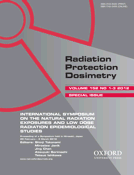
RADIATION PROTECTION DOSIMETRY
Fostering innovation in safeguarding against radiation hazards.RADIATION PROTECTION DOSIMETRY is a vital academic journal dedicated to the field of radiation protection, published by Oxford University Press. With an ISSN of 0144-8420 and an E-ISSN of 1742-3406, this journal serves as a platform for groundbreaking research and developments in dosimetry, health physics, and radiation safety spanning over four decades since its inception in 1981. Recognized with a Q3 ranking in multiple categories including Medicine (miscellaneous) and Public Health, this journal plays a key role in disseminating important findings that inform policy, enhance practice, and promote the protection of both individuals and the environment from radiation hazards. While currently not available as Open Access, the journal's curated content is essential for researchers, professionals, and students dedicated to advancing knowledge in radiation protection and related areas. Interested readers will find the latest research trends, case studies, and reviews invaluable for their work and studies within this multidisciplinary domain.

Journal of Instrumentation
Advancing the frontiers of measurement and mathematical physics.Journal of Instrumentation, published by IOP Publishing Ltd, stands at the forefront of the fields of instrumentation and mathematical physics, playing a crucial role in advancing the knowledge and practice within these domains. With an ISSN of 1748-0221 and an esteemed position as a Q2-ranked journal in both categories as of 2023, it showcases high-quality research and innovative findings that contribute to the broader scientific community. Operating since 2006, this journal facilitates the dissemination of cutting-edge developments and interdisciplinary approaches in measurement techniques and their applications, making it a vital resource for researchers, professionals, and students alike. The journal maintains a competitive edge, ranked in the 59th percentile in mathematical physics and the 35th percentile in instrumentation according to Scopus rankings, reflecting its commitment to quality and impact. With a focus on accessible scientific communication, the Journal of Instrumentation is dedicated to nurturing a collaborative environment that promotes the integration of theoretical advancements and practical issues, providing an essential platform for sharing vital research discoveries.
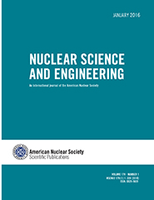
NUCLEAR SCIENCE AND ENGINEERING
Driving Progress in Nuclear TechnologyNUCLEAR SCIENCE AND ENGINEERING, published by Taylor & Francis Inc, is a leading journal in the field of nuclear energy and engineering, providing a vital platform for disseminating cutting-edge research and advancements from both academia and industry. With an ISSN of 0029-5639 and an E-ISSN of 1943-748X, the journal boasts a notable impact factor and is categorized in the Q2 quartile for 2023, reflecting its influence and quality in the field. Covering a comprehensive scope from the inception of nuclear technology in 1969 to contemporary advancements forecasted for 2024, it ranks #38 out of 77 in the Scopus Energy – Nuclear Energy and Engineering category, placing it in the 51st percentile. Although the journal is not open access, it remains essential for researchers, professionals, and students seeking to stay abreast of the latest developments and innovations in nuclear science. Located in the heart of Philadelphia, NUCLEAR SCIENCE AND ENGINEERING contributes significantly to the advancement of nuclear engineering knowledge and practice, making it a crucial resource for anyone involved in this dynamic field.
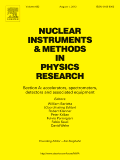
NUCLEAR INSTRUMENTS & METHODS IN PHYSICS RESEARCH SECTION A-ACCELERATORS SPECTROMETERS DETECTORS AND ASSOCIATED EQUIPMENT
Pioneering research in nuclear methods and technologies.NUCLEAR INSTRUMENTS & METHODS IN PHYSICS RESEARCH SECTION A is a leading journal published by Elsevier, dedicated to the advancements in accelerators, spectrometers, detectors, and associated equipment relevant to the fields of nuclear and high energy physics. With its ISSN 0168-9002 and E-ISSN 1872-9576, this journal fosters knowledge sharing among physicists and researchers globally, providing a critical platform for both theoretical and experimental studies. Currently ranked in the Q2 quartile for both Instrumentation and Nuclear and High Energy Physics, the journal maintains a robust position in the competitive Scopus rankings, with noteworthy placements that underline its scholarly impact. As of 2023, it occupies the 38th rank in Nuclear and High Energy Physics and the 79th in Instrumentation, illustrating its relevance in the scientific community. Covering research spanning from its inception in 1983 to the projected completion in 2024, the journal caters to a diverse audience of researchers, professionals, and students eager to stay abreast of the latest innovations and techniques in the realm of nuclear instrumentation. Although it primarily operates under subscription-based access, it is instrumental in disseminating pivotal findings and experimental methodologies that drive progress in the scientific community.
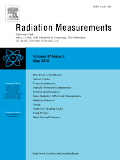
RADIATION MEASUREMENTS
Transforming Understanding through Precision Measurements.RADIATION MEASUREMENTS is a highly regarded academic journal published by Pergamon-Elsevier Science Ltd, focusing on the interdisciplinary field of radiation science and instrumentation. With an ISSN of 1350-4487 and an E-ISSN of 1879-0925, this journal aims to disseminate cutting-edge research and practical advancements from 1994 to 2024. It holds a commendable position in the Scopus rankings, being categorized in the top quartiles (Q2) for both Instrumentation and Radiation, reflecting its significance in the scientific community with a notable percentile of 64th and 59th, respectively. Although it does not offer Open Access options, the journal serves as a vital resource for researchers, professionals, and students seeking to explore innovations that shape the understanding and measurement of radiation phenomena. With a commitment to high-quality research, RADIATION MEASUREMENTS continues to contribute essential knowledge in the fields of physics and astronomy, positioning itself as a key publication for those dedicated to advancing radiation technology and its applications.

Journal of Infrared Millimeter and Terahertz Waves
Advancing the Frontiers of Infrared and Terahertz ScienceJournal of Infrared Millimeter and Terahertz Waves, published by Springer, is a pivotal academic outlet in the realms of condensed matter physics, electrical and electronic engineering, instrumentation, and radiation, with an impressive impact factor underscoring its relevance in contemporary research. This journal, with both ISSN 1866-6892 and E-ISSN 1866-6906, offers open access to its articles, ensuring that the latest findings are widely disseminated and accessible to the global scientific community. Ranked in the Q2 quartile across multiple categories, including a notable 9th percentile ranking in radiation within the Scopus database, this journal serves as a significant platform for researchers and professionals. With a publication history spanning from 2008 to 2024, it continues to enrich the field with high-quality research articles, reviews, and insights. The journal's commitment to fostering innovation and interdisciplinary collaboration makes it an essential resource for anyone involved in the investigation and application of infrared, millimeter, and terahertz technologies.